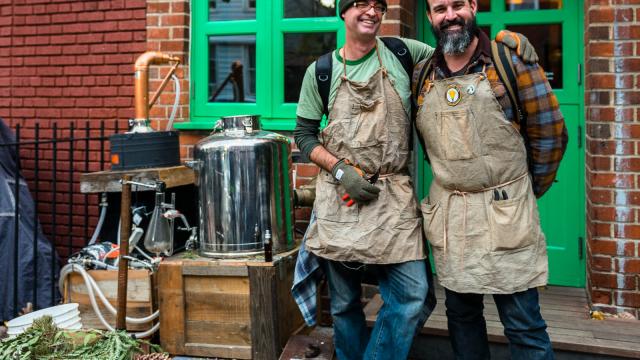“Wild” fragrance firm Juniper Ridge has been running a pop-up shop these last couple of months in New York City, where it’s been hosting footpath distillations of local plantlife — literally making cologne from trees and bushes — and running the occasional smell hunt, a short guide to the trees of the neighbourhood based on what the public can sniff.
Gizmodo was on hand last week for a stroll around the block with Juniper Ridge founder Hall Newbegin and chief distiller Obi Kaufmann. As Newbegin explains on the company’s website, the overall Juniper Ridge process is pretty damn fascinating, and I was eager to learn more in person:
We distill colognes and perfumes from real plants, bark, moss, mushrooms, and tree trimmings found hiking the backcountry.
A hundred years ago, all perfumes were made this way. Today we’re the only ones who handle every step of the process ourselves, from beginning to end.
That process can look pretty ridiculous at times. We go camping. We crawl around in mountain meadows. We smell the wet earth beneath fir trees, and spend whiskey-fuelled hours geeking out over the scent of wind off a glacier.
We make our fragrances throughout the West Coast — on dirt roads and trails, around campfires, and in our Oakland, California workshop. All to capture the quiet beauty of the Mojave Desert at sunrise, or a late-season Sierra trailhead with winter right around the corner.
The fact that last week’s “wild aromatic distillation” event would be hosted on the streets of Brooklyn, using vegetation from New York City’s best borough, only added to the strange appeal of seeing (and smelling) how all this really occurs.
After all, what happens when you do the same thing in an urban environment — when it’s not the smell of breezes off glaciers but winds gusting off the roofs of abandoned warehouses or a slow morning fog rolling down the Gowanus? How do you distill perfumes and colognes from that?
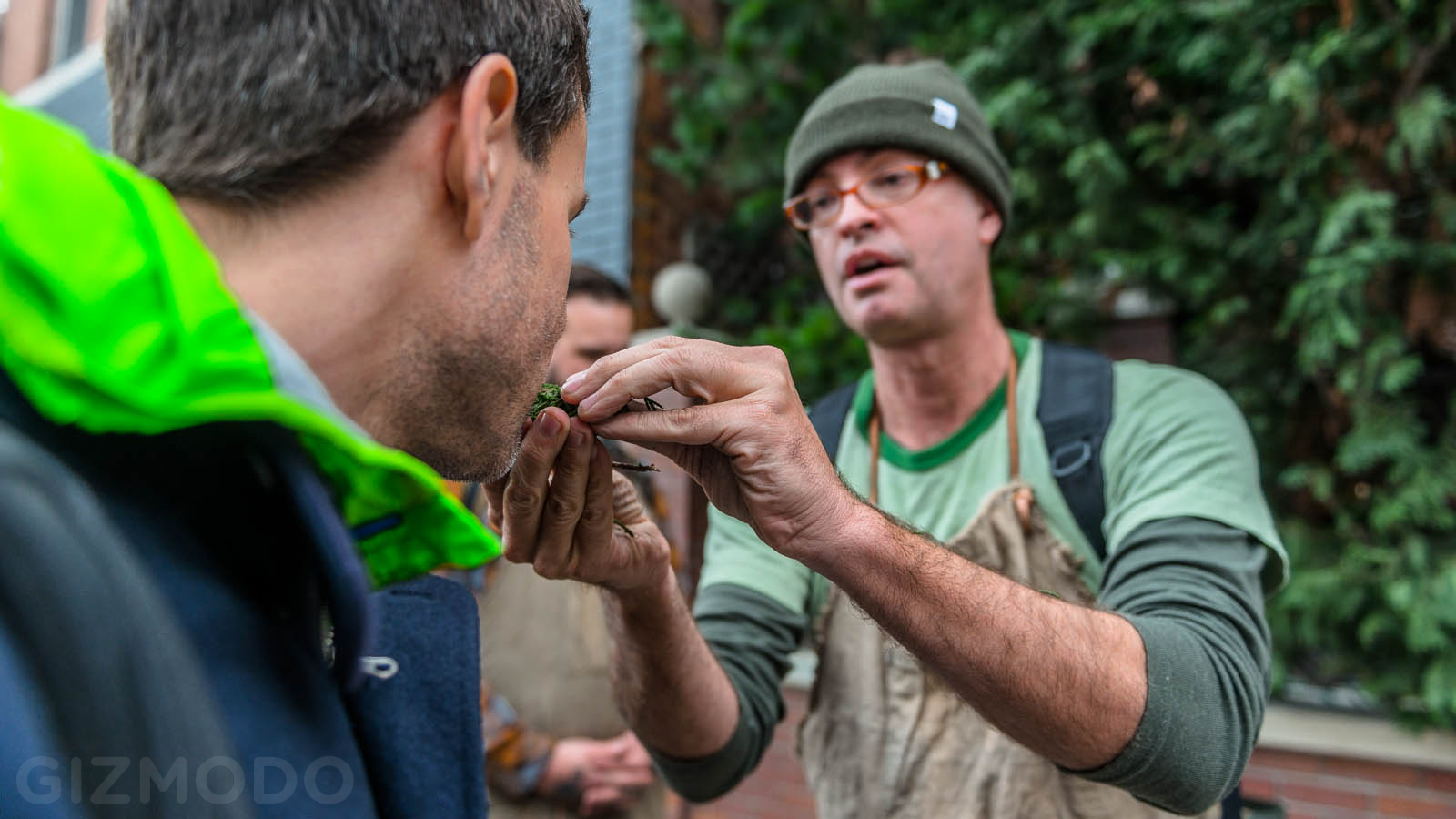
We met at the Juniper Ridge pop-up shop — hosted next door to Fellow Barber, into which a consistent line of expensively booted clientele walked in for an afternoon clipping — to meet Hall and Obi in person, and to check out the distillation process ourselves.
The shop is tiny — in fact, nearly too small to walk past another customer — and it is kitted out to feel like a luxury cabin in the woods, equal parts Dwell and Swiss Family Robinson. In fact, the entire day, from the wood-paneled storefront to the matching boots of Hall and Obi, to their expensive outdoor gear and heavily patched backpacks, felt elaborately propped to the point of seeming more like a piece of performance land art, a kind of smellable earthwork in the form of a company.
Juniper Ridge is perhaps what Robert Smithson would have done, had he developed more of an entrepreneurial bent.
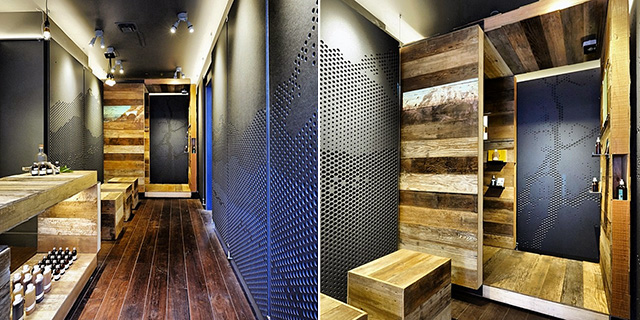
Instagrams courtesy of Juniper Ridge.
The available scents are on display below the front counter, packaged as a soap, a “cabin spray”, and a “backpacker’s cologne”, which is really just a fragrant oil (Obi, while talking us through the various concoctions, liberally applied these colognes, one by one, to his very full beard).
The fragrances are strong and not easy to miss. They are like fully embodied clouds of landscape that can stop you in your tracks. Each is named after the landscape it comes from. For instance, there’s Big Sur, Siskiyou, Yuba Rover, Cascade Glacier, Inyo and Caruthers Canyon. The idea is more like the terroir of wine: that, rather than call a fragrance “cedar,” it is instead named after the region it comes from. You don’t buy a Juniper Ridge product for its ingredients, then — or, rather, not only for its wild-harvested ingredients — but for its fragrant resemblance to a specific geographic location. Precipitation, elevation, soil chemistry, even the microbiome of a certain grove or meadow — all of this goes into the terroir of the smell, and all of these subsidiary species need to be considered while making a Juniper Ridge cologne.
Hall calls his products “aromatic snapshots” of a place, as if the absolute value of a landscape has been compressed and bottled, then made available for you to reapply elsewhere. You can fill your own apartment with a scented fog from Mt. Tamalpais or the Pacific Northwest.
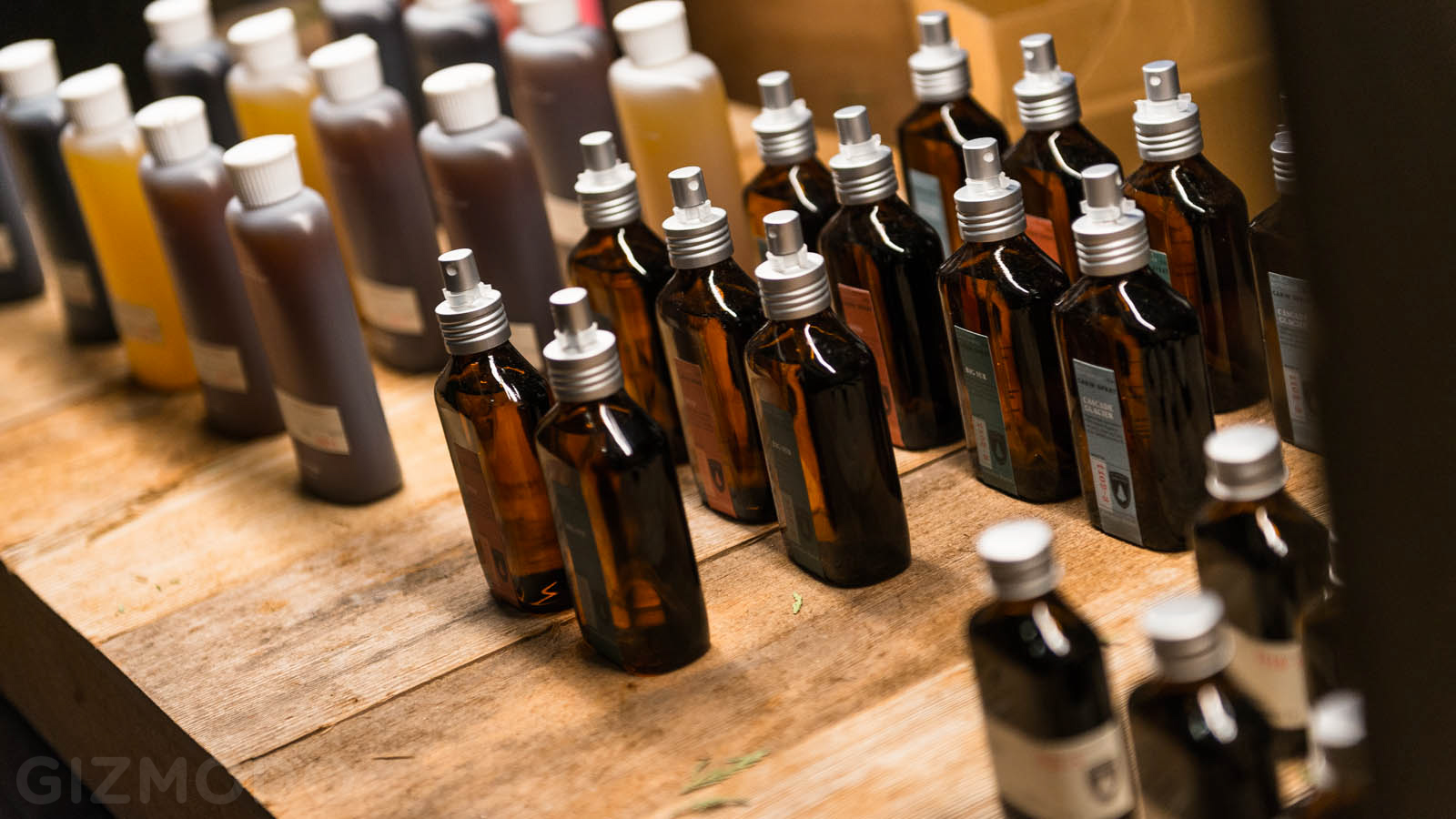
Juniper Ridge has actually been around since 1998, but seems to be riding something of a zeitgeist today, appearing in many lists of recommended colognes and popping up on blogs, such as this one, and in various glossy magazines.
Despite Hall’s lack of training as a perfumer — he emphasised repeatedly that he is “just a backpacker” who stumbled into fragrances out of kind of poetic fascination with them — Juniper Ridge has nonetheless got the process down to the science that, in the end, it actually is.
You boil water. You steam ingredients. You capture that steam and re-condense it. Oils extracted from the plants are then skimmed off as “essential oils.”
You narrow down a landscape and turn it into perfume.
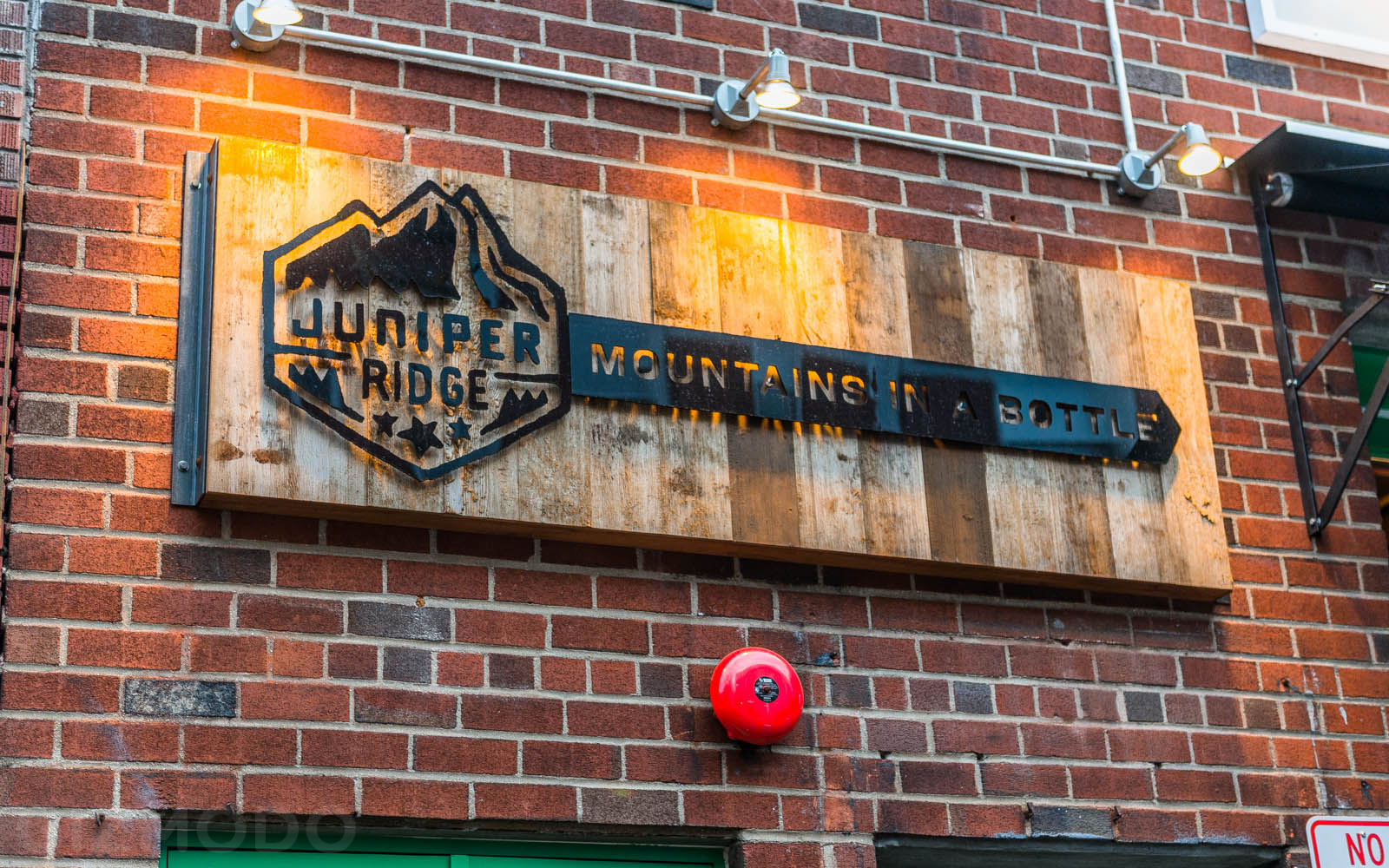
“Everyone thinks that fragrance is something that happens at the Nordstrom counter,” Hall quipped, “but fragrance is cooking, is gardening, is hiking, is crawling around on the ground.” Hall actually got down on his knees at this point, leaned forward, and smelled the sidewalk; everyone laughed.
Hall was smiling, too, sniffing concrete, but he was serious: “Fragrance is falling asleep under a sage brush,” he said. “Fragrance isn’t all that petrochemical crap you get in the synthetic stuff — that doesn’t go very deep. It doesn’t last. It’s just a quick, sharp hit, and it gets you addicted for more.” He referred to petrochemicals a lot, and gave us a quick rundown of how molecules are sensed by the nose.
“Of course, I’m a faker, too,” he added, looking back at the distilling apparatus and referring to the fact that his fragrances are simply accurate olfactory representations of a given landscape. “I’m getting close to something — but nature is impossibly beautiful and complex.”
He got up from his knees and I looked behind us in the street at a truck slowly driving by and the exhaust fumes coming from it, and I looked down at the oil stains and dog shit and plastic bags in the gutter. What impossibly beautiful natures would we find here in Brooklyn, now that our smell walk had begun? Would the poetry of the quest match up with the reality of our location?
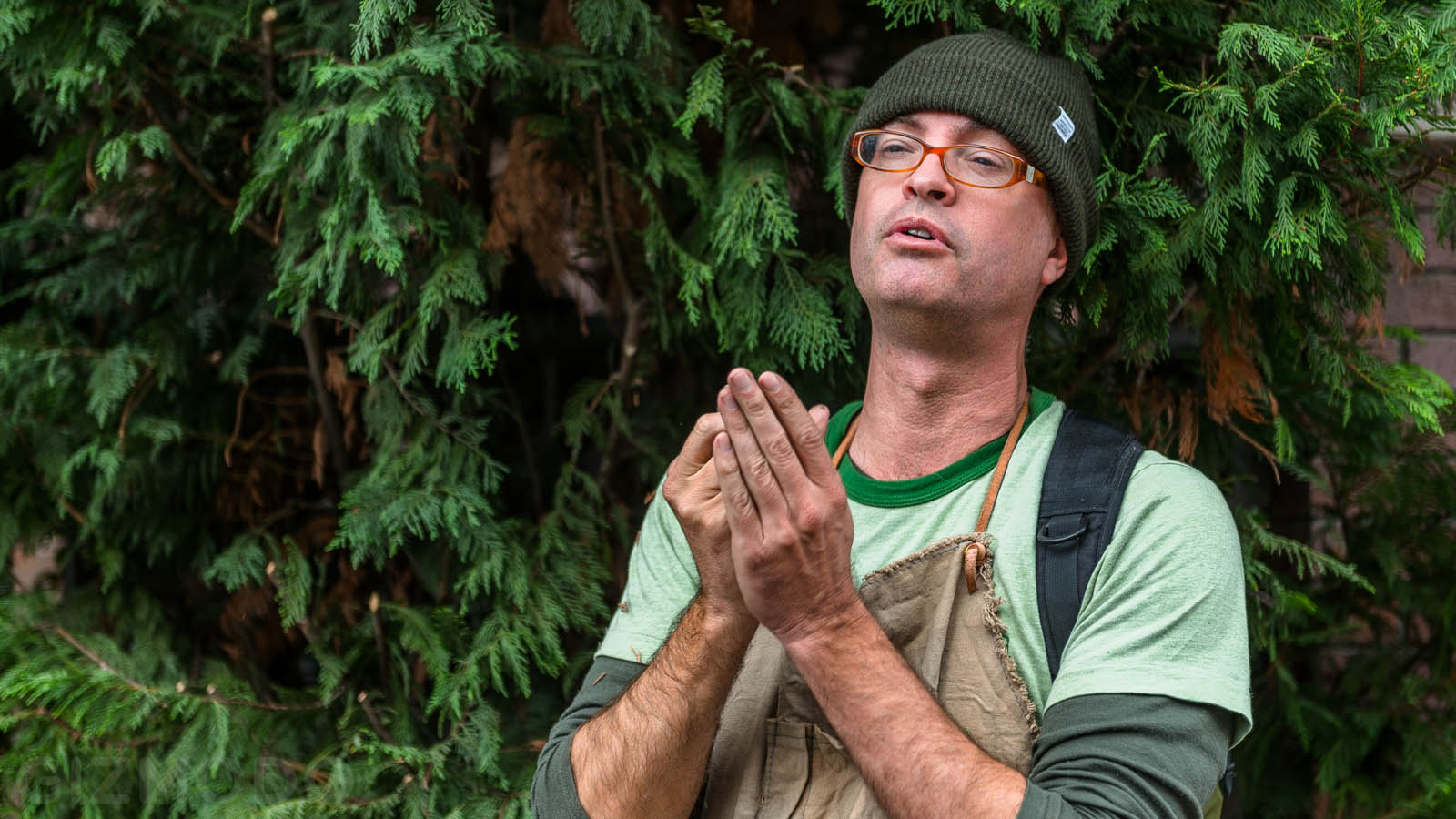
The tour itself was short but often strangely hilarious and decidedly surreal. It remained unclear till the moment we departed from the storefront what we’d actually be seeing — and smelling — that day, but Hall patiently gave me a great, step-by-step introduction to the trees around us, quoting poet Gary Snyder and giving me a crash course in regional botany. This included the incredible observation that New York City is, in fact, according to Hall, dotted with coastal cedars and redwoods brought back from the west coast by, among other people, 19th-century arborist David Douglas (of Douglas fir fame).
These mammoth trees, normally expected to reach hundreds of feet in height, are simply growing in people’s front yards and in abandoned lots, trimmed, pruned, and slowly speciating. An eco-futurist vision of New York City, its towers, streets, and railway tracks overgrown with giant redwood trees long after humans have died off, was a particularly awesome daydream to keep in mind while we walked past chain-link-fenced parking spots in Brooklyn, as displaced coastal cedar trees grew, lonely, in the gravel behind them.
They’re like vast, arboreal monsters simply biding their time until the day they can take over the city.

In any case, Hall and Obi joked about a grove of “lost cedars” they had found one night after much drinking — lost, because they still couldn’t remember where they’d seen them, and have remained unable to find them again weeks later, like some ghost orchard of repressed west coast wilderness that only appears for the inebriated.
It was clear, however, and this was where some of the hilarity began, that Juniper Ridge’s neighbours don’t necessarily take kindly to these scent walks — and, more specifically, to the rampant and by no means careful clipping that goes along with each expedition.

We walked past one restaurant, for example, that featured a potted cedar on the sidewalk outside, standing in full view of a floor-to-ceiling window. A woman in our group stopped to touch and smell the tree, preparing to say something about it — but our hosts flushed a little and hurried her on, actually escorting her up the sidewalk, saying that they’ve had complaints from the owners before about smelling their trees. I looked inside the restaurant to see several people watching us stroll past.
Only in Williamsburg, it seems, would people over-eager to smell trees be a reasonable complaint.

So on we went, clippers in hand, following our guides from street to street, sniffing trees outside restaurants and discussing the future forests of New York City. We touched things, rubbed leaves and pine needles, looked at every tree and shrub we walked past, and ended up in front of a small apartment tower.
Here, incredibly, a very large and noticeable empty patch had taken shape, created by earlier smell walks. It was easy to see how someone might object to this stealth — not to mention highly ironic — tactical deforestation of the neighbourhood.

We stood there for 10 minutes or so, discussing the differences within certain tree species and what sorts of fragrances could be mixed together from the distributed, broken up forests of urban Brooklyn. People walked by; a few asked questions; mostly they just looked at us, not even strangely, as if it was a surprisingly normal thing to do, to stop in front of an apartment building like this and smell its tree for 10 minutes at a time.
Then the cutting began. It was actually a little astonishing to see the extent to which our guides cut into this thing, cropping not-insubstantial branches and forming a growing pile on the ground. As if sensing the air of amazement amongst us, and in response to a question about whether all this was, well, legal, we quickly got into a discussion of where and how they harvest their other wild ingredients out west.
Hall explained that they’ve basically worked out a deal with the region’s forestry companies, receiving underbrush and branches that aren’t economically useful either for timber or for future paper products, and they do so in a way that saves the forestry companies tens of thousands of dollars in burning permits. But the question of whether or not an operation like Juniper Ridge has an upper limit — a point at which it simply can’t harvest materials at large enough scale to meet demand — is an interesting one, and probably something that will keep the firm quite lean for the duration of its existence.
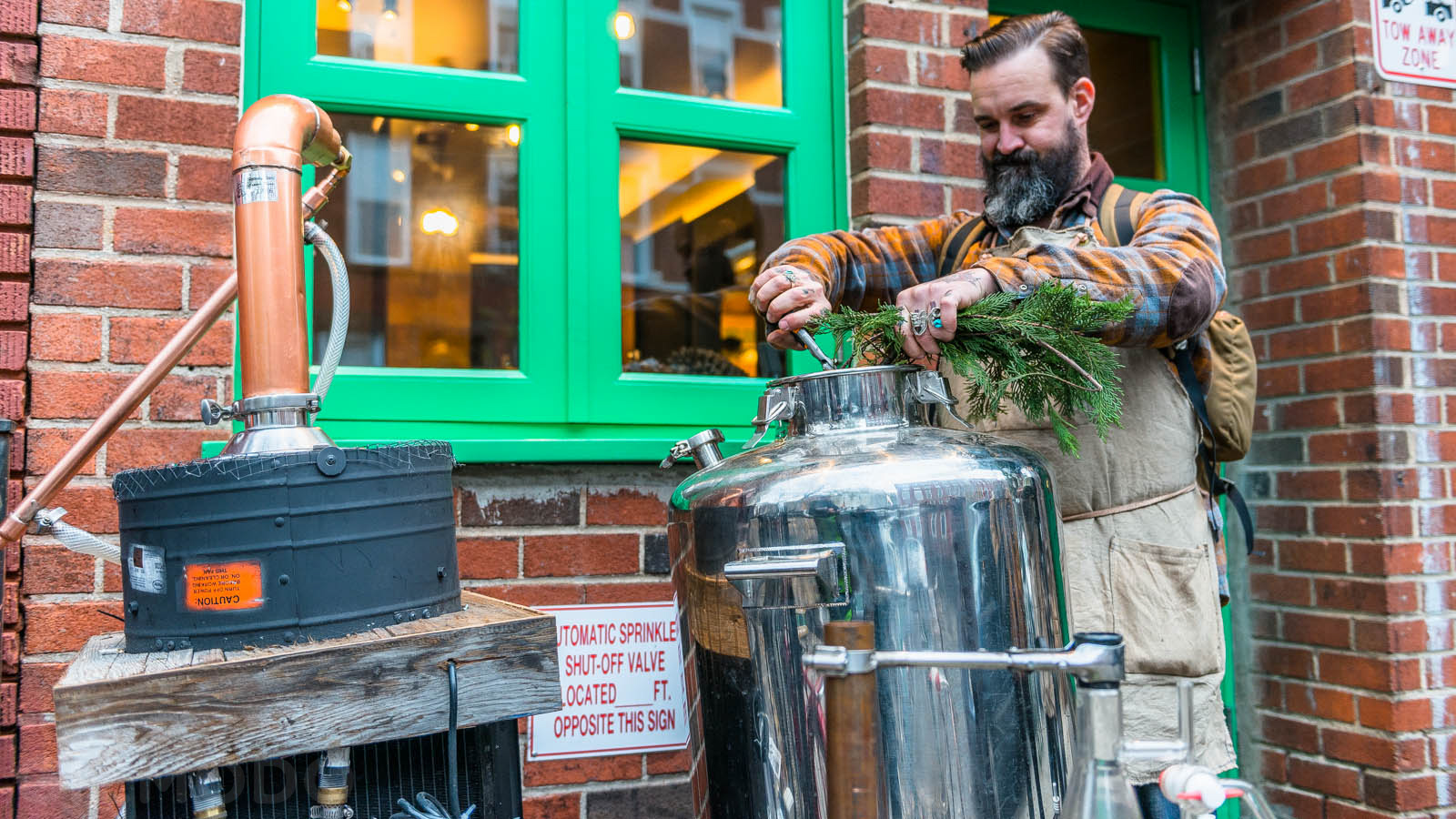
Here in Brooklyn, the pile of branches was scooped up off the sidewalk and carried back with us to home base.
Outside Juniper Ridge is their distiller; it is powered by extension cables fed out through the window, and it operates by way of a small boiler. Obi fed the machine clipped up pieces of branches and whole pine cones, then poured in the water for steaming.

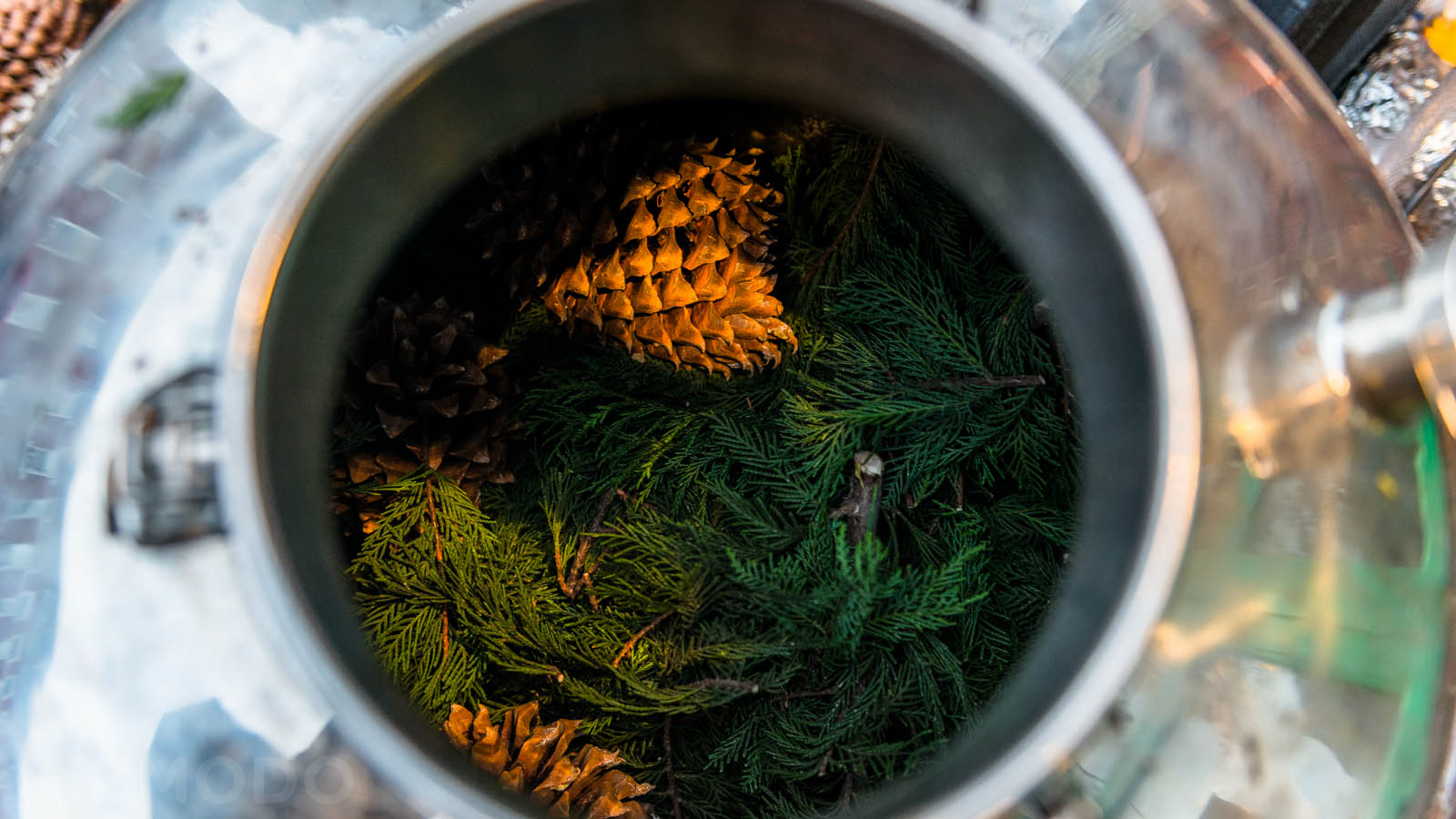

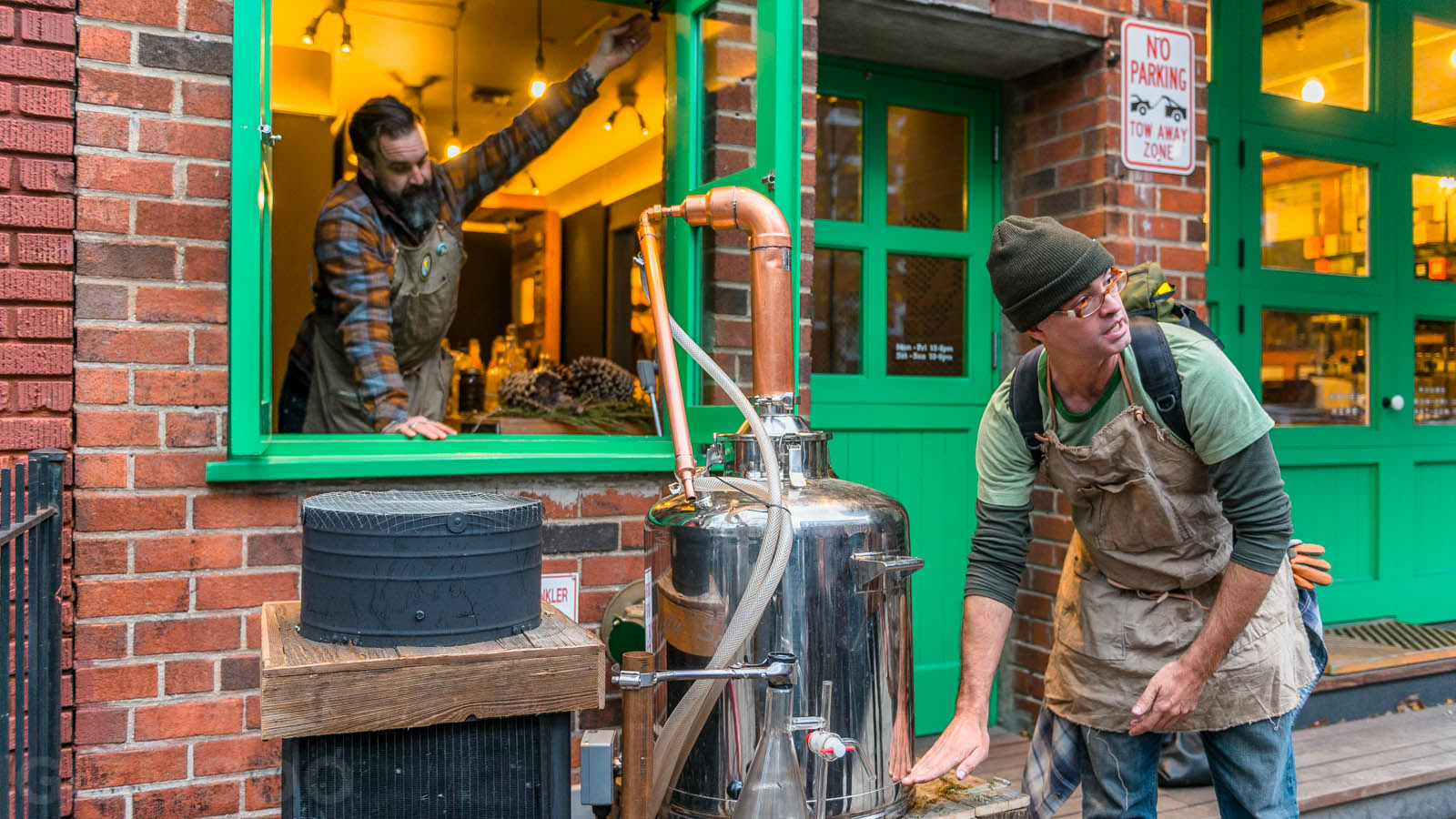
All in all, the process would take another 2-3 hours, they said, maybe more; the distiller whirred to life, a few more people stopped walking to look at this strange, Dr. Seuss-like contraption steaming away on the sidewalk, surrounded by small wooden boxes of branches and pine cones; then we all went back inside, stepping out of the late-afternoon cold to smell the bottled landscapes of the West Coast while stunted East Coast variants of those mysterious and giant species boiled away in the November air outside.
The Juniper Ridge pop-up shop closes on December 21; check their blog, The Wildcrafter, for info on future smell walks and distillations. [Juniper Ridge]
Pictures: Nick Stango
